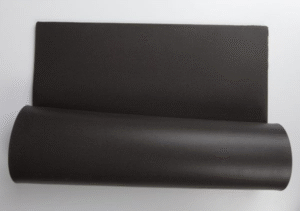Specialty Silicone Products (SSP) will showcase its growing portfolio of space-grade silicones at SATELLITE 2024, an upcoming event known as the Satellite Show. SSP has made major investments in developing silicones for spacecraft, satellites, and ground infrastructure. In addition to EMI shielding and grounding, SSP provides non-conductive, high-strength silicones for use in space.
SSP will be represented at SATELLITE 2024 by Dominic Testo, Business Development Manager, and Taylor Smith, Research Development Technician. Visit them in Booth #1005 in Exhibit Hall A&B to see samples of SSP’s space-grade silicones and to discuss your application. The Satellite Show is slated for March 18 to 21, 2024 at the Walter Convention Center in Washington, D.C.
“Deciding to attend the Satellite Show was easy,” says Testo. “This is fast-growing market that needs the innovative materials and products SSP makes right here in the United States.”
Non-Conductive and Conductive Space-Grade Silicones
SSP’s newest space-grade material, SSP2575, is currently used on spacecraft and meets the needs of a $300B satellite market that will double in size by 2032. This non-conductive, 65-durometer silicone remains flexible at temperatures as low as -116°C (-177°F) and passes ASTM E595 outgas testing with a Total Mass Loss (TML) of 0.17%. In space, outgassing can cloud surfaces like optics.
At SATELLITE 2024, SSP will also showcase electrically-conductive silicones that provide proven levels of shielding against electromagnetic interference (EMI), a problem that can affect spacecraft electronics. For example, SSP502-55LT is a low outgassing, extreme low-temperature EMI silicone with a shielding effectiveness greater than 113 dB for the 20 MHz to 10 GHz frequency band.
This 55-durometer shielding silicone withstands extreme cold and has a TR-10 low-temperature capability of -70°C in ASTM D1329 testing. Under ASTM E595 testing for outgassing, SSP502-55LT has a TML of 0.15%, which is within the limits that NASA typically uses. This EMI silicone is filled with nickel-coated graphite particles that provide a less expensive alternative to traditional silver fills.
GORE GS2100 Replacement and EMI Waveguide Gaskets
SSP’s nickel-graphite EMI silicones include SSP502-40-V0, a low-durometer space-grade elastomer that is replacing GORE® GS2100, a spaceflight-approved material that was made by W.L. Gore. SSP’s offset to this discontinued GORE-SHIELD® product passes both ASTM E595 outgas testing and UL94 V0 flame testing. SSP502-40-V0 seals gaps under low pressure and fills a key gap in the marketplace.
Along with its space-grade elastomers, SSP will showcase sample EMI waveguide gaskets for ground infrastructure like radar, GPS, weather monitoring, and secure communications. As the satellite market continues to grow, a single satellite may need to communicate with thousands of ground receivers, each of which contains waveguides and EMI gaskets.
SSP invites Satellite Show attendees to visit Booth #1005 in Exhibit Hall A&B to learn more about its materials and products. SSP makes its own EMI silicones and fluorosilicones in-house, has its own testing laboratory and toolroom, and fabricates EMI gaskets using flash cutting, die cutting, and compression molding. To schedule a meeting in advance, email Dominic Testo.
About Specialty Silicone Products (SSP)
Specialty Silicone Products (SSP) makes EMI/RFI silicones, EMI/RFI gaskets and O-rings, military and aerospace silicones, FDA and USP Class VI silicones, and laboratory products. SSP’s Ballston Spa, New York (USA) headquarters is ISO 9001:2015 certified and has a facility footprint of 54,000 square feet. SSP is part HEICO Corporation, a leader in aerospace and electronics.




